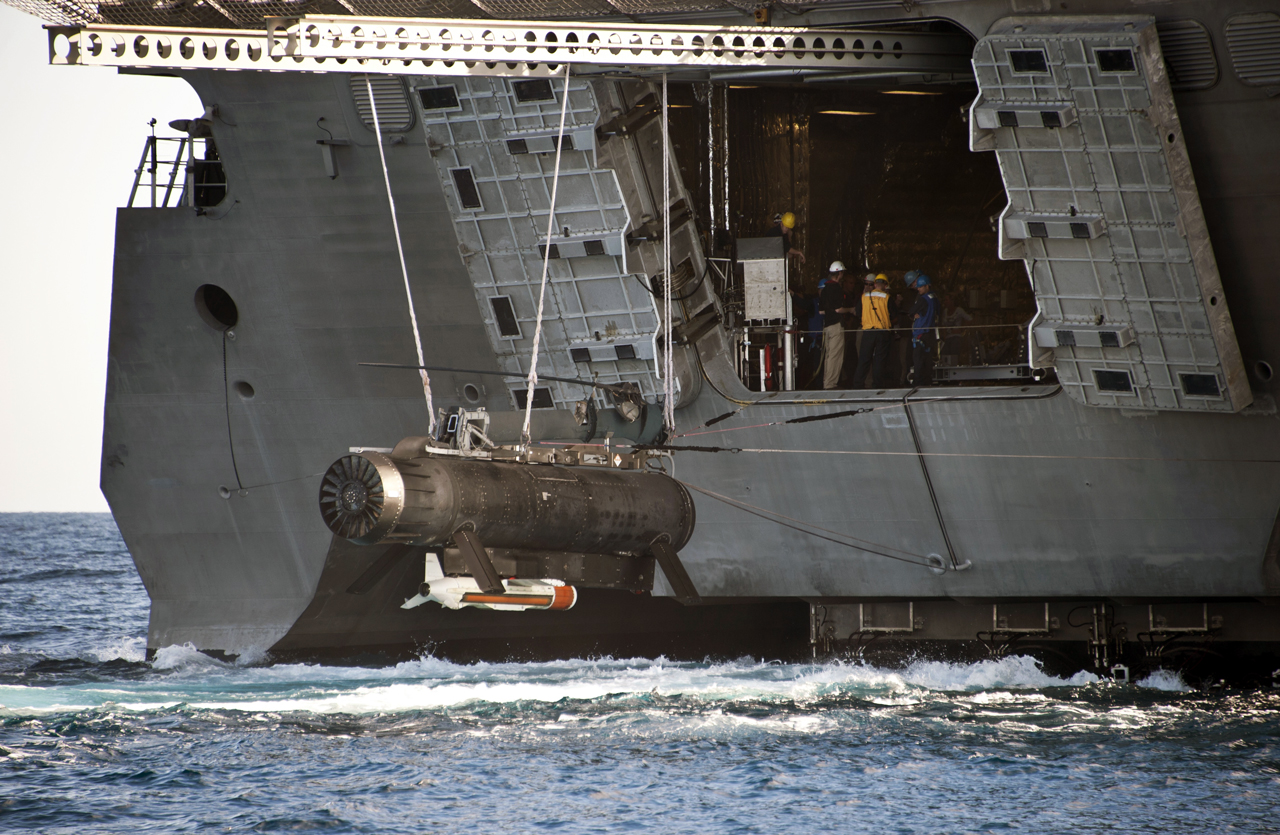
THE PENTAGON — The Navy has officially canceled the Remote Minehunting System acquisition program, but the AN/AQS-20A advanced minehunting sonar within the RMS program may live on in another capacity, a senior defense official told reporters Thursday.
The Navy originally planned to buy 54 RMSs for its Littoral Combat Ship mine countermeasures mission package. It has bought 10 so far and will not award a contract to Lockheed Martin for additional vehicles, the service announced Feb. 26. Service officials said then that the Navy would upgrade most of the 10 Remote Multimission Vehicles – the unmanned vehicle at the center of RMS – and ultimately compete it against the Textron Common Unmanned Surface Vehicle (CUSV), which is already slated to join the LCS mine countermeasures package as a minesweeping vehicle, and the General Dynamics Knifefish unmanned underwater vehicle, which will join the mission package for buried and high-clutter minehunting.
On Thursday the senior defense official said that future Navy budget requests would contain funding lines for an unmanned vehicle to tow minehunting sonar, since the requirement for an unmanned vehicle to search for mines still exists, but decisions haven’t been made yet about what that future vehicle might be. Though the AQS-20A sonar has performed well in testing, the Navy has not formally decided if the future unmanned vehicle will tow the Q-20 or another sensor.
Still, the official said it was likely that the sonar could live on. The Navy and Pentagon acquisition chief Frank Kendall are in discussions about whether the sonar would become its own program within the mine countermeasures mission package, be folded in with another existing acquisition program, or something else. There are no immediate plans to buy more sonars, the official said, giving the Navy and Defense Department time to figure out the best path forward.
The official said canceling the RMS program after just 10 vehicles saved the Navy about $750 million, though the Navy will still have to buy more vehicles eventually. The cancelation technically triggered a Nunn-McCurdy breach, since curtailing the program led the per-unit cost to spike – initial development costs were spread over 10 instead of 54 vehicles – though the official said the breach is in name only.
Also in the Pentagon’s 2015 Selected Acquisition Reports, which outlined the RMS Nunn-McCurdy breach, are cost updates on several Navy shipbuilding programs. The reports include information on all acquisition costs – research and development, procurement, and program-specific military construction and operations and sustainment.
The Ford-class aircraft carrier program increased in cost by about 2.6 percent, mostly due to the addition of nearly a billion dollars in advance procurement funding for CVN-81 and $161 million in Ford Class Design for Affordability research and development investments. The report notes the increases were offset by about $252 million in efficiencies expected in the future Enterprise (CVN-80) and other cost decreases.
For the Arleigh Burke-class guided missile destroyers, program costs increased primarily due to buying four more ships since the previous year. The LCS program increased in cost by about $7 billion, or 32 percent, from buying eight more ships and incorporating survivability and lethality enhancements into the frigate upgrade. On the Virginia-class submarines, cost increased about $5 billion, or 5 percent, due to buying an additional boat, adding additional Virginia Payload Modules into the planned Block V, developing an acoustic superiority program and other research and development efforts.
A second senior defense official told reporters that quantity increases do not count as cost growth – and though technically the research and development additions count as program growth, they are expected to lead to more capability or lower acquisition costs in the future and therefore do not reflect badly on the program.





